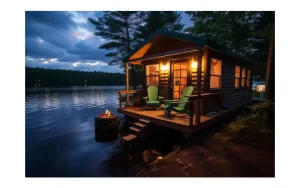
Introduction
When planning for a construction zone, the placement of traffic barriers is an important step. In this article, three different types of barriers are discussed: Jersey barriers, Modular Concrete Barriers, and Barriers With Gravel. You’ll learn about the advantages and disadvantages of each type along with instructions on how to place them to best fit your project needs.
What Are the Different Types of Jersey Barrier?
Different types of barriers can be used for different purposes in construction zones.
- Fencing: Fencing can be used to keep people and animals away from the construction site. It can also be used to create a physical barrier between the construction zone and the public.
- Barrier mats: Barrier mats are thin, lightweight sheets of material that are placed on the ground to create a temporary barrier. They can be used to keep pedestrians and vehicles out of the construction area or to prevent debris from entering the zone.
- Barriers made of chain link: Chain link barriers are often used in construction zones to protect workers and equipment from being hit by traffic or debris. They can also be erected as a physical barrier between the construction area and the public.
How Are They Used?
There are many types of jersey barrier that can be used for a variety of construction zones. These barriers can be used to protect people, vehicles, and equipment from traffic collisions and other dangers.
There are six main types of jersey barriers: shoulder, median, barrier islands, ditches, berms, and swales. Each has its own advantages and disadvantages.
Shoulder barriers are the most common type of jersey barrier. They’re typically made out of a strong metal or plastic frame that’s fixed to the ground at either end. A heavy-duty mesh curtain is then attached to the frame. When traffic needs to cross the barrier, they must go through the mesh curtain first. This prevents cars from hitting people or objects on the other side of the barrier.
Median barriers are similar to shoulder barriers except that they have two arms that extend out perpendicular to each other. This makes it easier for cars to cross the barrier instead of going through the mesh curtain.
Barriers are usually made out of concrete or metal and are positioned in between lanes of traffic. They’re designed to prevent cars from crashing into each other while they’re driving across a construction zone.
 How Do I Choose Which Type of Barrier to Use?
How Do I Choose Which Type of Barrier to Use?
There are a few things to consider when choosing the right type of barrier for your construction zone. The first is the height of the barrier. Barriers that are shorter will usually be less effective at preventing traffic from entering or exiting the construction zone, while barriers that are taller will usually be more effective. The second factor to consider is the material of the barrier. Some materials are more effective at repelling debris or dirt, which can help keep the area clean and free from contamination. Finally, it is important to consider how often the barrier will need to be replaced. Barriers that are easy to replace tend to last longer than barriers that require professional installation.
Why Is a Plastic Barrier Better Than a Metal One?
A metal barrier is generally better than a plastic one because it is more durable and lasts longer. Metal barriers can also be easily replaced if they become damaged. Plastic barriers, on the other hand, may not last as long as metal barriers, and they may need to be replaced if they become damaged.
There are a lot of factors to consider when choosing which type of barrier and barricade to use in your construction zone. First, the material should be sturdy and weatherproof so it can handle the elements. Second, the barrier should be easy to install and remove without damaging the area. And finally, the barrier should be affordable so you can keep your construction zone clean and organized.
A plastic barrier is better than a metal one for several reasons. First, metal barriers are heavy and can damage surfaces if they’re knocked over. Second, metal barriers rust over time, which can lead to contamination and safety hazards. Finally, metal barriers are difficult to install and remove – you have to use special tools and it can take hours or days to put up or take down a metal barrier. Plastic barriers, on the other hand, are lightweight and easy to move around. They also don’t rust or corrode over time, which means you can keep your construction zone looking good for longer periods of time. Plus, plastic barriers are affordable so you won’t have to spend a lot of money to keep it clean and organized.
Conclusion
There are a few things you should take into consideration when choosing the right type of jersey barriers for your construction zones. First and foremost, you want to make sure that the barrier is specifically designed for construction use. Secondly, you need to consider how durable the barrier will be and whether or not it will hold up under heavy traffic conditions. Last but not least, make sure that the barrier has a reasonable price tag so that you can get the most value for your money.

Joe Webster is a freelance writer and editor living in Illinois. He studied creative writing at the University of Missouri and is known for his vibrant stories and unique take on topics. Joe has been writing and editing for over six years and loves exploring different cultures and languages. He is passionate about making meaningful connections with readers, enabling them to grow through his writing.






